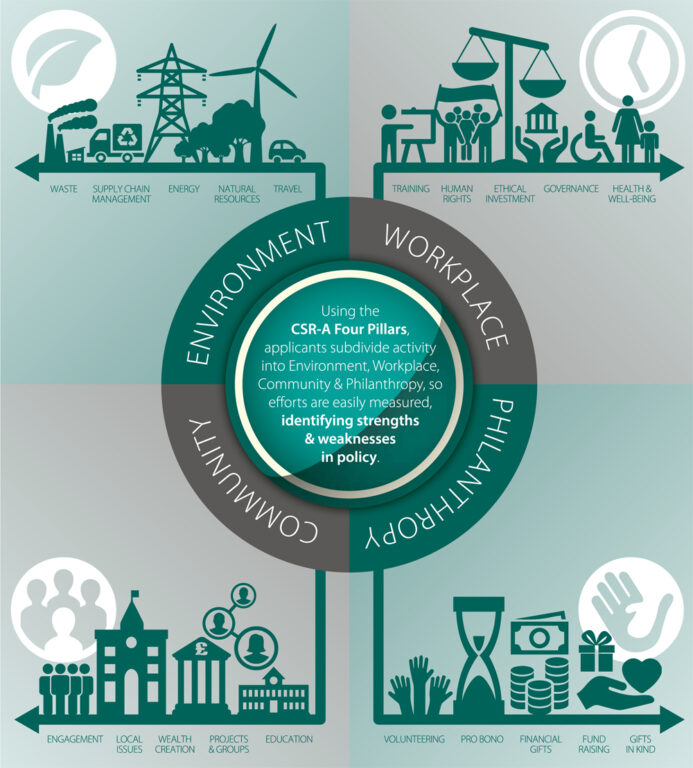
It is becoming increasingly important that a company reports on relevant (or ‘material’) issues, says Richard Collins
You may have heard the term ‘materiality’ and wondered, ‘What does this mean to my business?’ Coupled with the term ‘sustainability’, it becomes even more perplexing. But it is a perfect solution for helping your organisation prioritise what is important to your internal and external stakeholders with regard to the increasingly complex sustainability landscape.
Organisations use the concept of materiality to help guide their sustainability strategic planning processes. It helps to address material sustainability issues such as economic, environmental, or social concerns that a company has an impact on or may be impacted by. They may also be issues that significantly influence the assessments and decisions of stakeholders. Sustainability reporting is currently a voluntary exercise, but it is generally recognised as best practice. It is becoming increasingly important that a company report on the relevant (or ‘material’) issues that have a direct or indirect impact on its ability to create and maintain economic, environmental, and social value for itself, its stakeholders, the environment, and society at large.
Materiality in the Context of Sustainability
In the sustainability context, the term materiality refers to those issues that can have significant repercussions on the company (both positive and negative). While there are no obvious financial implications, these do exist in terms of staff engagement, retention, recruitment, reputation and so on.
For example, the issue of climate change and deforestation is generally considered to be a material issue for companies like Nestlé. Nestlé relies on agriculture to produce its products, and without skilled farmers, it would likely face significant business challenges. Demand for coffee continues to rise globally, but other crops are competing with coffee for limited arable land. This means farmers face considerable challenges, including profitability, human rights risks, and the effects of climate change, in coffee-growing regions.
The material risk to Nestlé is that they may face pressure from stakeholder groups who object to issues of environmental sustainability in stressed regions. It will be of importance to Nestlé to prioritise a strategy that addresses these concerns – both for the benefit of the business and for the financial success of the company.
This is where the concept of double materiality comes into play. This is how corporate information can be important for its implications about both a company’s financial value, and about a company’s impact on the world at large, particularly with regard to climate change and other environmental impacts. The idea of double materiality comes from a recognition that a company’s impact on the world beyond finance can be material, and therefore worth disclosing, for reasons other than the effect on a company’s bottom line.
What Is a Materiality Analysis?
A materiality analysis is a process that enables a business to identify their most important sustainability areas to focus on so that they can be addressed as a priority, and to understand which are of most concern to stakeholders and how they impact the success of the business.
Materiality assessments are formal exercises aimed at engaging stakeholders to find out how important specific environmental and social responsibility issues are to them. The insights gained can then be used to guide strategy and communication and help you tell a more meaningful sustainability story. The process for conducting a materiality assessment includes identifying key issues, collecting data from internal and external stakeholders, conducting a stakeholder survey, and mapping and prioritising the issues from which to build a sustainability strategy.
So, who can perform a materiality assessment? Any company or organisation can perform a materiality analysis to understand which areas are relevant to their management. PAs, EAs, and VAs are often perfectly placed to coordinate with relevant departments to contribute the data collection and stakeholder surveys. Companies that have been preparing sustainability reports for some time and are already familiar with them can use this information to focus on the use of resources to generate maximum impact with stakeholders.
A Quick Look at Process Overview
What are your sustainability issues and how do you prioritise them?
1. Conduct a sustainability data-gathering exercise
Pull together sustainable information that is ‘material’ to both internal and external stakeholders. This could be climate change, net zero, diversity and inclusion, and/or community engagement.
The CSR-A Four Pillars of Environment, Workplace, Community, and Philanthropy provide a useful and easily accessible framework to baseline what an organisation is already doing and where there may be gaps that need consideration. This data forms the basis of a dedicated survey for internal and external stakeholder groups.

2. Identify all relevant stakeholder groups
Materiality assessments are most valuable when you’re able to gather diverse insights from inside and outside company walls. Begin the materiality process by creating a list of relevant stakeholder groups, then identify key contacts within each who can provide a meaningful perspective on your company’s sustainability strategy. These should include employees, shareholders, investors, suppliers, customers, communities in which you operate, NGOs, and the media.
3. Design and launch the survey tailored to each stakeholder group
Analyse insights individually to determine what issues are most important to each stakeholder group. In addition, bring all the data together to find commonalities. To get the best results, materiality assessments should be formal, so use a traditional survey format to make it easy for stakeholders to complete and easy for you to analyse results. In the survey, ask stakeholders to rate the importance and impact of each indicator you’ve identified. The end result should be a formal matrix graph that plots how each indicator ranks in significance relative to stakeholder influence.
You will find that the different stakeholder groups will have different areas of concern. Employees may focus on the areas of labour practice, equal gender pay, and mental health and wellbeing, while your supply chain may focus on net zero and customers on climate change issues.
4. Analyse the findings of the surveys
It is good practice to review specific comments, because the comments are often where the most value is derived. Analyse insights individually to determine what issues are most important to each stakeholder group. In addition, bring all the data together to find commonalities. You can create several overlays to help map out trends and observations, but the end result should be a formal matrix graph that plots how each indicator ranks in significance relative to stakeholder influence.
5. Prioritise
Now you can prioritise the matters according to order of importance, defined together with the board of directors and the sustainability team. Illustrate the issues in a matrix according to their relevance to your business. Use the matrix to prioritise and define strategies. Here you can identify what to measure and report on and what not to.

6. Take action
What’s left is to put those insights into action. While sustainability materiality assessments are certainly an exercise in stakeholder engagement, the engagement shouldn’t end after they complete the survey. Share your results and insights with your stakeholders (and beyond!).
Sharing your materiality assessment results can serve as a starting point for continuing the conversation and maintaining engagement with your sustainability initiatives. In addition, incorporate your findings into an overall sustainability strategy so you can create communications plans for each group and more effectively tell your company’s sustainability story.
Conclusion
While a materiality assessment requires time, effort, and resources, it’s an invaluable tool for gathering insights that can drive your organisation’s sustainability strategy and enable meaningful reporting.












